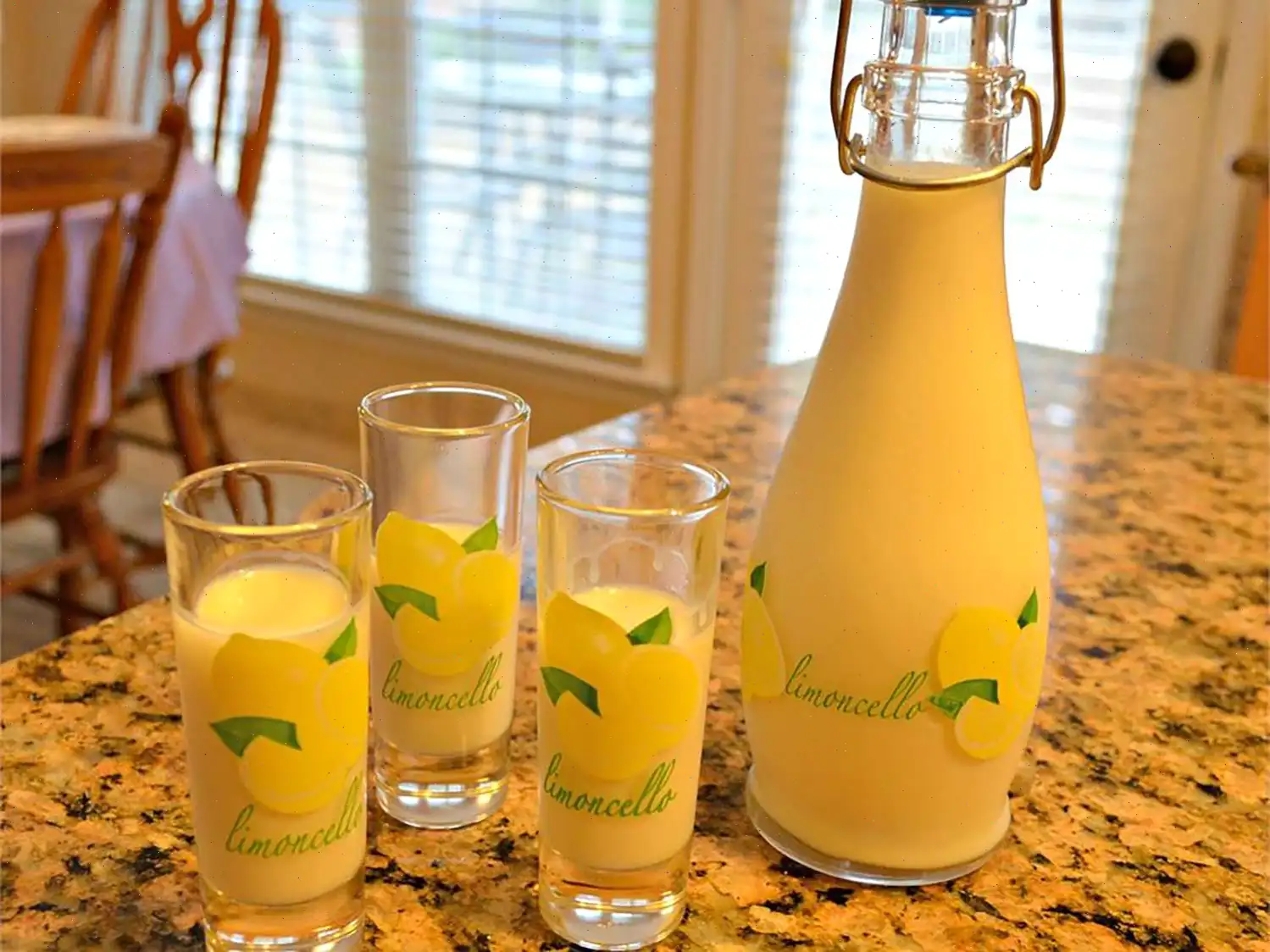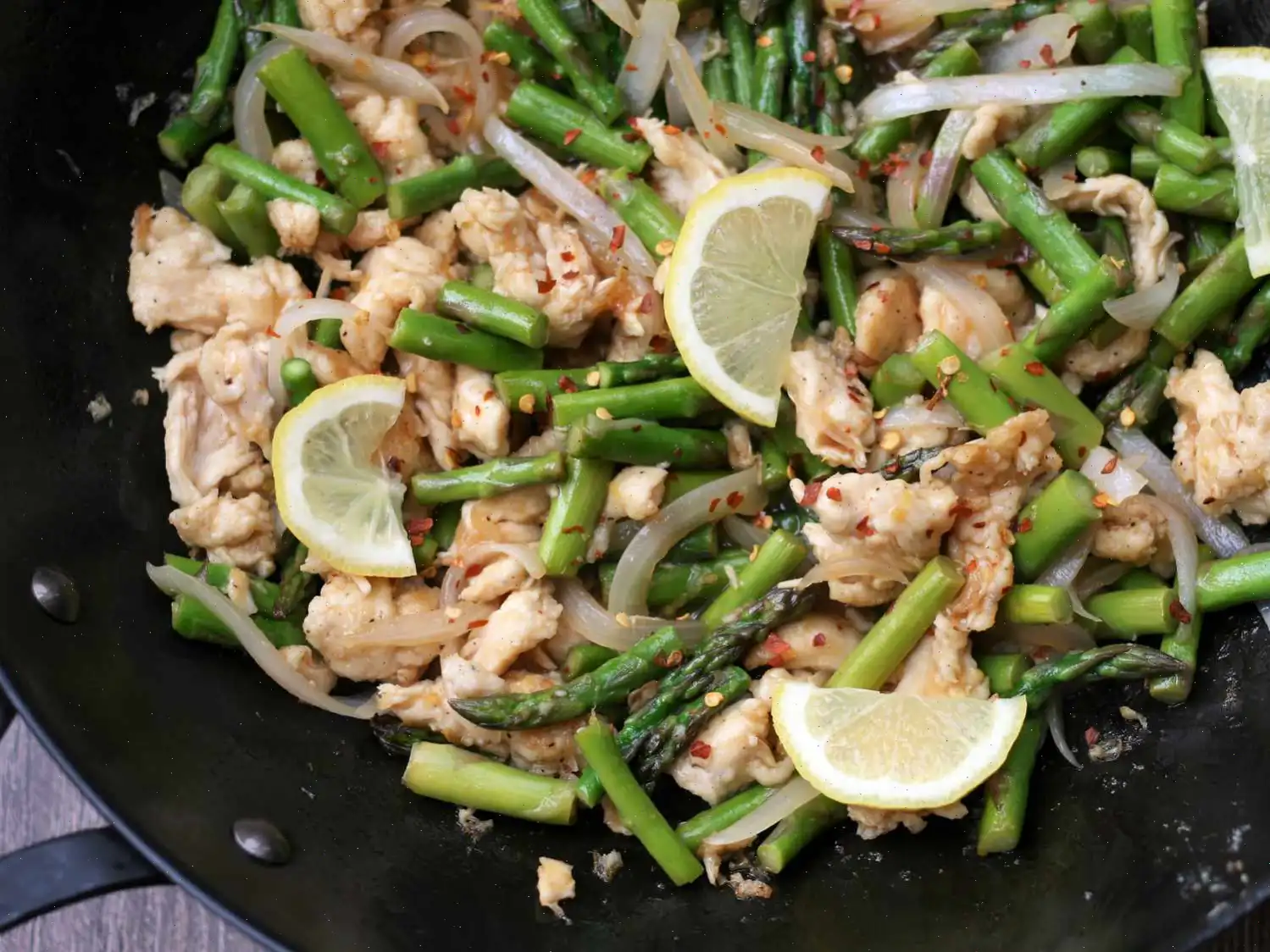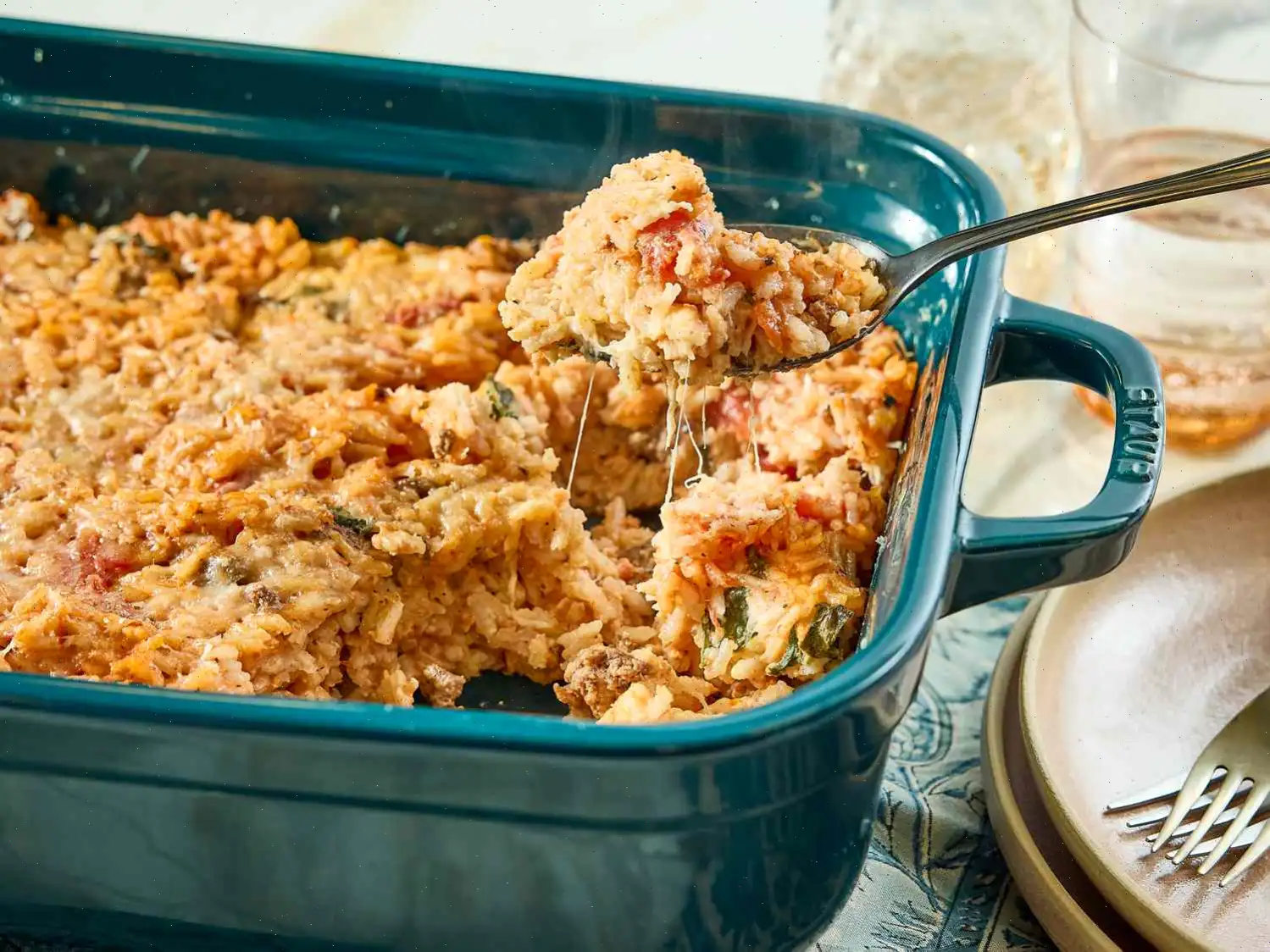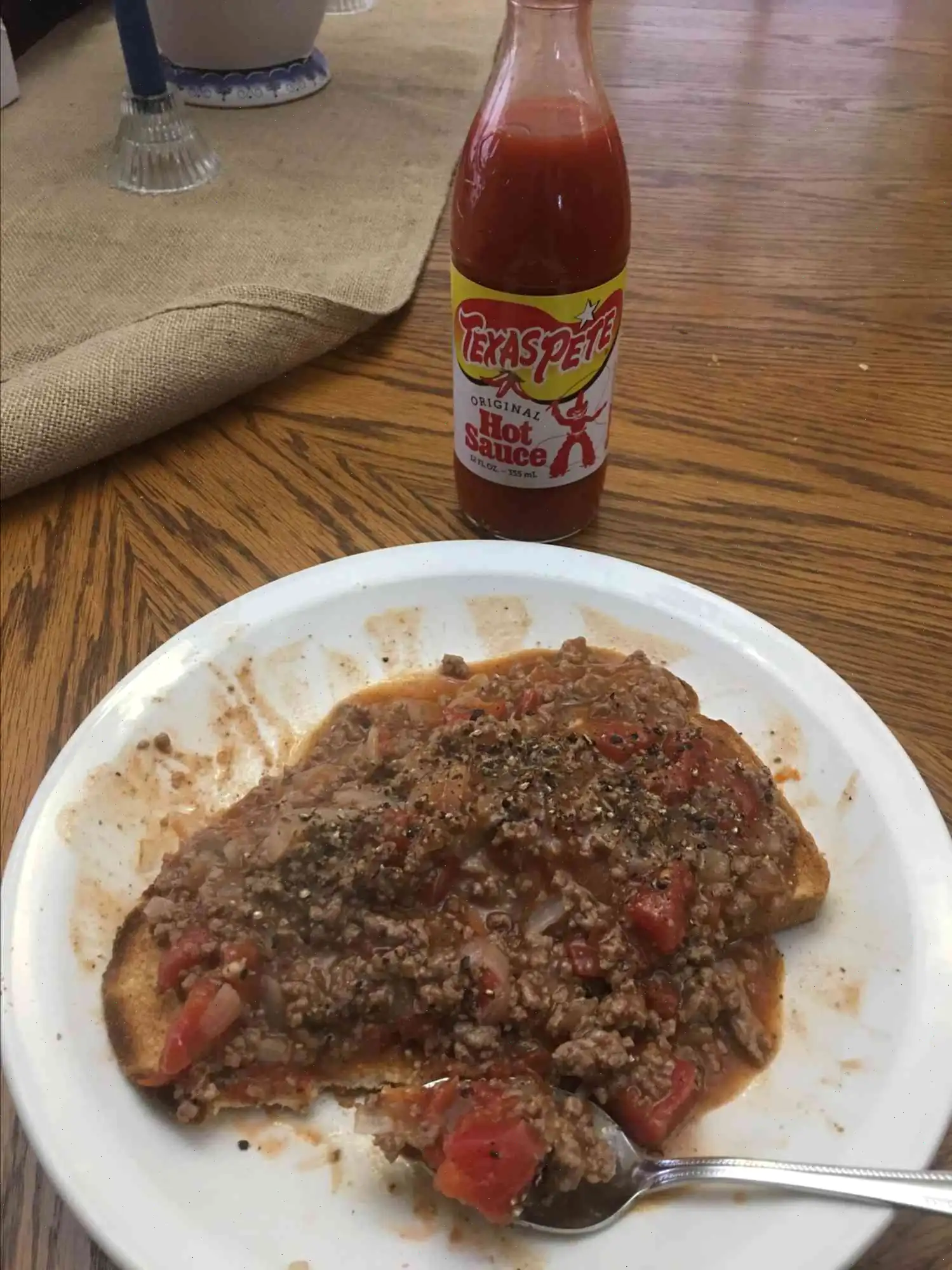
Crema di Limoncello (Cream of Limoncello) Recipe
Ingredients
This recipe was developed at its original yield. Ingredient amounts are automatically adjusted, but cooking times and steps remain unchanged. Note that not all recipes scale perfectly.
Original recipe (1X) yields 90 servings
- 12 lemons, zested
- 1 (750 mL) bottle Everclear 190 proof
- 1 1/2 quarts whole milk
- 7 1/2 cups white sugar
- 1 (3g) packet powdered pure vanilla extract, such as Paneangeli Vanillina, or 1 teaspoon vanilla extract
- 3 (750 mL) decorative bottles with tight-fitting lids, or more if bottles are smaller
Directions
- Wash and scrub the lemons to remove any wax or residue. Carefully peel the lemons with a vegetable peeler or a sharp knife, ensuring to only remove the yellow zest and not the white pith.
- Place the lemon zest in a large glass jar with a tight-fitting lid. Pour the Everclear over the lemon zest, close the jar, and tighten the lid. Let the mixture sit at room temperature in a dark place for at least 2 weeks.
- In a large, heavy-bottomed pan, combine the milk and sugar. Heat over medium heat, stirring occasionally, until the sugar is fully dissolved and the mixture is hot but not boiling.
- Add the powdered vanilla extract or liquid vanilla extract to the milk mixture and stir well. Remove from heat and let the mixture cool completely.
- Once the lemon mixture has steeped for at least 2 weeks, strain it into the cooled milk mixture using a fine sieve or cheesecloth. Discard the lemon zest and stir the combined liquids well.
- Pour the mixture into a with a spout, then decant into decorative bottles. Seal the bottles and store them in the freezer for optimal freshness.
Nutrition Facts (per serving)
| Nutrition | Amount | % Daily Value* |
|---|---|---|
| Calories | 96 | |
| Total Fat | 1g | 1% |
| Saturated Fat | 0g | 2% |
| Cholesterol | 2mg | 1% |
| Sodium | 7mg | 0% |
| Total Carbohydrate | 18g | 6% |
| Dietary Fiber | 0g | 0% |
| Total Sugars | 17g | |
| Protein | 1g | 1% |
| Vitamin C | 1mg | 1% |
| Calcium | 20mg | 2% |
| Iron | 0mg | 0% |
| Potassium | 23mg | 0% |
* Percent Daily Values are based on a 2,000 calorie diet. Your daily values may be higher or lower depending on your calorie needs.
** Nutrient information is not available for all ingredients. Amount is based on available nutrient data.
(-) Information is not currently available for this nutrient. If you are following a medically restrictive diet, please consult your doctor or registered dietitian before preparing this recipe for personal consumption.
Crema di Limoncello, or Cream of Limoncello, is a delightful Italian liqueur that blends the vibrant zest of fresh lemons with the richness of cream and the sharpness of alcohol. Its a decadent twist on the classic Limoncello, offering a smoother, creamier texture that's perfect as a dessert drink or a refreshing after-dinner treat.
History of Crema di Limoncello
The origins of Crema di Limoncello can be traced back to southern Italy, specifically the Amalfi Coast and the island of Capri. Limoncello itself has been enjoyed for centuries, dating back to at least the early 1900s, though some sources claim that its roots extend even further. The creamy version, Crema di Limoncello, emerged as a more recent innovation, possibly in the late 20th century, as a way to create a more versatile and indulgent version of the original liqueur. While Limoncello is typically served as a digestif, Crema di Limoncello's rich, velvety texture allows it to be enjoyed in a variety of settings, from a luxurious after-dinner drink to a sophisticated cocktail base.
Regional Variations
Although Limoncello is most famously associated with the Amalfi Coast, the Sorrentine Peninsula, and the island of Capri, where the citrus fruit is grown in abundance, Crema di Limoncello has spread across Italy and beyond. While the base recipe remains largely the same, regional variations can sometimes include different types of alcohol, such as grappa or vodka, and different flavorings, such as vanilla or cinnamon. Some regions in Italy use different cream-based products, such as mascarpone or ricotta, to create their own distinct versions of Crema di Limoncello.
Differences from Similar Dishes
Crema di Limoncello stands out from its cousin, the classic Limoncello, due to the addition of cream. While both liqueurs are made with the zest of lemons and high-proof alcohol, the key difference lies in the texture and flavor. Classic Limoncello is a clear, sharp spirit, often sipped as a refreshing shot or used in cocktails. On the other hand, Crema di Limoncello is opaque, sweet, and rich, with a smooth, creamy consistency that makes it more akin to a dessert liqueur. This makes it a unique offering for those who enjoy a sweeter, more indulgent beverage.
Where is Crema di Limoncello Typically Served?
Crema di Limoncello is typically served chilled, either straight from the freezer or slightly thawed. It is often enjoyed after a meal, especially in Italy, where it is considered a perfect digestif. Its creamy texture and citrus flavor make it a refreshing and satisfying way to end a meal. In some upscale restaurants or bars, Crema di Limoncello can also be served in cocktails, blended with other spirits or used as a topping for desserts such as gelato. Its not uncommon to see this liqueur featured at celebrations, weddings, or as a unique gift for guests.
Fun Facts About Crema di Limoncello
- The lemons used for Crema di Limoncello, typically Sorrento lemons, are known for their intense flavor and thick, aromatic skin, which makes them perfect for infusing alcohol.
- Crema di Limoncello is sometimes referred to as a "summer drink," thanks to its refreshing lemony flavor, but its also enjoyed year-round, especially in Italy.
- Although it's famous in Italy, Crema di Limoncello has gained popularity worldwide, and many distilleries in countries like the United States and the UK now produce their own versions of this beloved drink.
- Some people love to use Crema di Limoncello as a base for dessert cocktails, blending it with champagne or sparkling wine for a refreshing, fizzy treat.
You can listen to this recipe in AI audio format. Simply click the play button below to listen to the content in a format that suits you best. It’s a great way to absorb information on the go!
FAQ about Crema di Limoncello (Cream of Limoncello) Recipe
Comments
Kimberly Smith
10/19/2024 06:47:38 PM
So cozy, I’ll make it every week.








